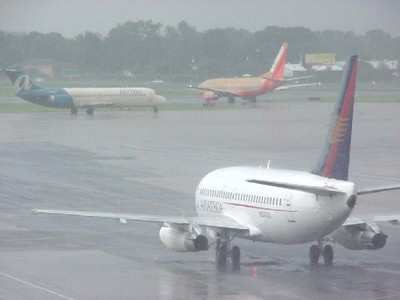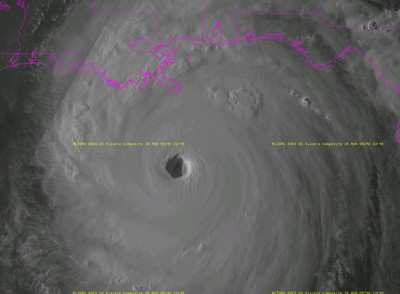Last Year's Improvement Project May Have Saved Runways
By ANN Associate Editor Rob Finfrock
The news from New Orleans and Mississippi seems to get worse
with each passing day. Scenes of inconceivably horrendous
devastation, human suffering and squalor, and rampant crime flash
across television screens throughout America and the world, while
signs of hope are few and far between. It has to get better...
someday, it just has to.

A massive airlift into New Orleans finally began on Friday, said
to be the largest ever in US history, coordinated by the Department
of Transportation. As of this writing, the airport remains closed
to everything except four relief flights per hour, with supplies
coming in and people going out, dawn through dusk.
The delay was caused in part by the need to wait three days for
the waters to recede from the grounds at New Orleans' Louis
Armstrong International Airport, and debris to be cleared off that
facility's two main runways. It had also taken that long for
limited ATC functions to be reestablished at the airport.
 Now would not seem to be the time
for anyone to say "it could have been worse," as the toll from
Katrina continues to mount... but it could have been far worse, and
here is why: those flights might not have been happening even now,
five days after the storm hit, had it not been for a little bit of
foresight on the part of MSY airport director Roy Williams.
Now would not seem to be the time
for anyone to say "it could have been worse," as the toll from
Katrina continues to mount... but it could have been far worse, and
here is why: those flights might not have been happening even now,
five days after the storm hit, had it not been for a little bit of
foresight on the part of MSY airport director Roy Williams.
According to a report in Architectural Record magazine, Williams
had the choice one year ago between upgrading and refurbishing the
passenger terminal at MSY, or spending the approximately $83
million available on repaving and modernizing the runways at the
airport.
The runway project got the nod... and that may have made all the
difference, says civil engineer Mario Rodriguez, who is also deputy
director of planning and development at MSY.
"We didn't have a crystal ball, but we'd known the runways'
elevation had to be raised," said Rodriguez, speaking by phone to
Aileen Cho with the Engineering News-Record from an emergency
office in Dallas. Crews had installed polystyrene sections to
address settlement, taken out the old concrete topped with asphalt
layers, and poured new concrete. The process also resulted in
raising the runway elevations by about 18 inches.
"It made the difference," Rodriguez said. "The runways stayed
dry."

What's more, work crews were finishing up the reconstruction
project just one week before Katrina hit. Had the storm hit any
sooner, the pavement would have likely come "unraveled" in the fury
of the wind and rain, according to Rodriguez.
Of course, there is still significant damage to the airport.
Approach systems for the runways are still down, although the FAA
is working hard to restore them for the planes flying the airlift.
MSY is operating on emergency generators, with wind-caused damages
to the terminal alone estimated to require at least $40 million to
repair. Commercial flights are unlikely to resume at the airport
for quite some time... if ever at all, given the questions of New
Orleans' very future.

But it could have been far, far worse. Had MSY sustained any
more damage from the storms, and had those runways been
flooded out or even destroyed by the ravages of the hurricane...
there would be no relief flights into New Orleans going on at all
right now, and all of those people would now be suffering that much
more.
In the face of one of the worst natural disasters to ever hit
the United States, now -- more than ever -- is the time for all of
us to be grateful for what little fortune and good luck does come
our way. After all, sometimes eighteen inches can make all the
difference.
 NTSB Final Report: Cozy Cub
NTSB Final Report: Cozy Cub ANN FAQ: Contributing To Aero-TV
ANN FAQ: Contributing To Aero-TV Classic Aero-TV: Seated On The Edge Of Forever -- A PPC's Bird's Eye View
Classic Aero-TV: Seated On The Edge Of Forever -- A PPC's Bird's Eye View ANN's Daily Aero-Linx (04.29.25)
ANN's Daily Aero-Linx (04.29.25) ANN's Daily Aero-Term (04.29.25): Execute Missed Approach
ANN's Daily Aero-Term (04.29.25): Execute Missed Approach






